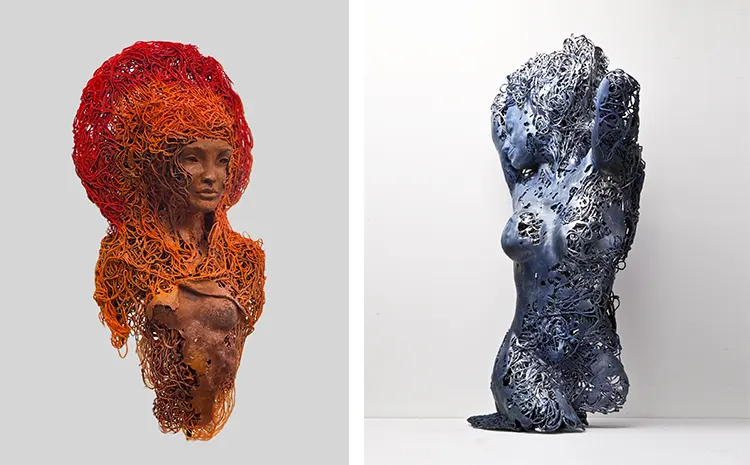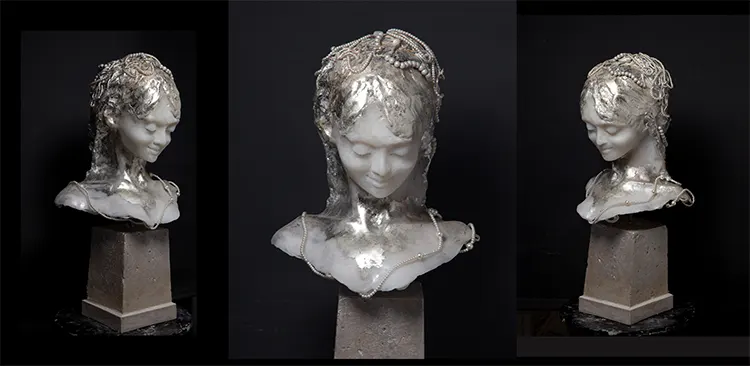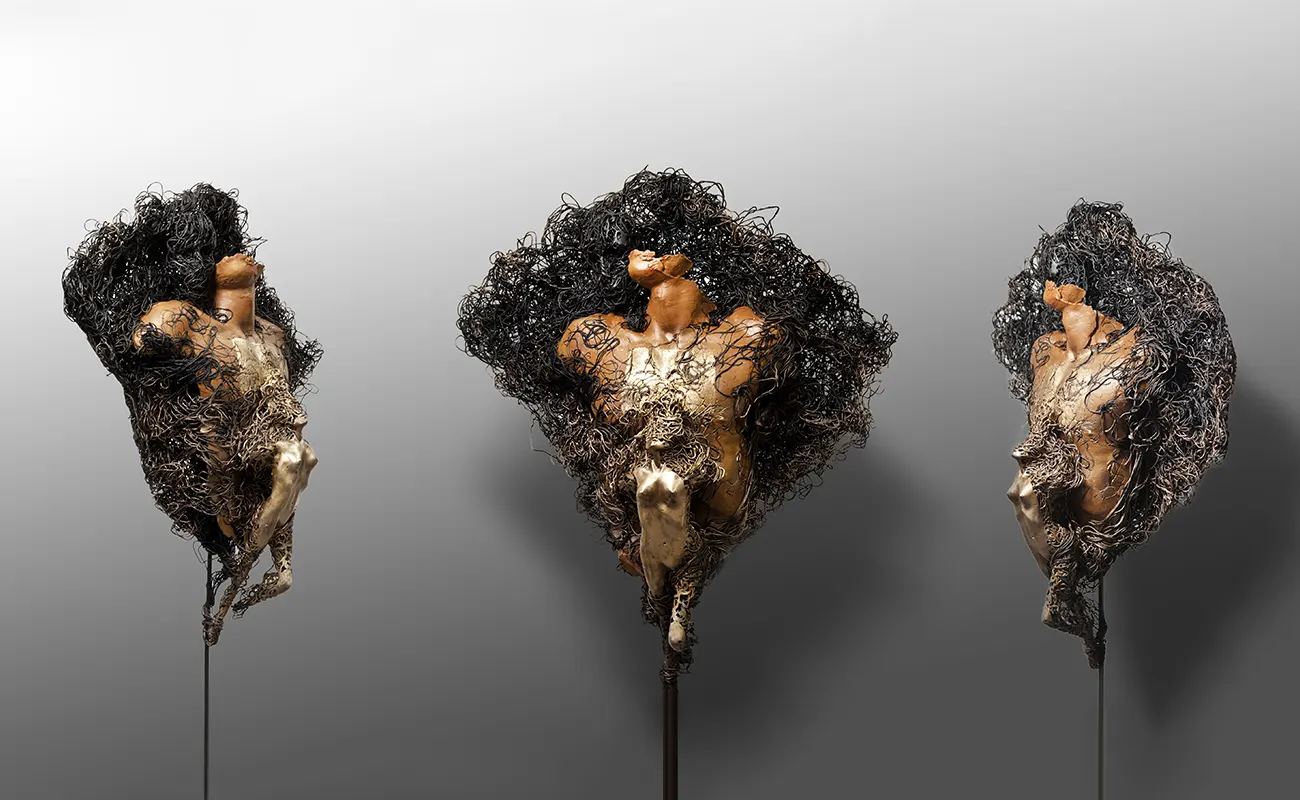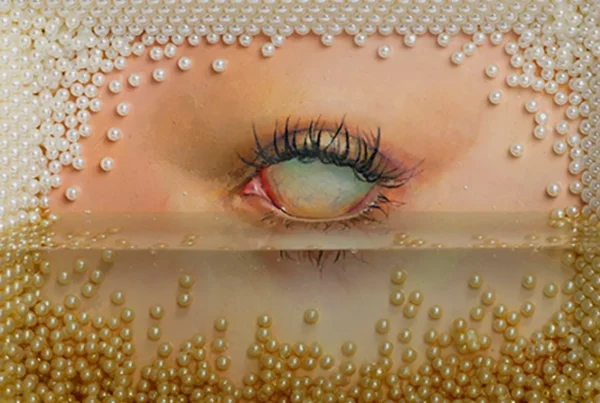“The joy of an encounter, the warmth of a sunset, or a yearning for what might be. There is always some part of myself in them, a fragment of my life.”
Raf Tarnawski’s Artistic Awakening: Seeking Beauty in a Gray World
Raf Tarnawski first drew breath in the industrial city of Wrocław, Poland, an environment characterized by the pervasive shades of communist gray and red. Immersed in a milieu where beauty and aesthetics were suppressed under the guise of bourgeois traits, the young Tarnawski found himself yearning for an existence punctuated by beauty, a desire manifesting in both his surroundings and his interactions. A pivotal moment in his artistic awakening occurred around the age of nine, when he found himself enchanted by the intricate worlds crafted by Bruegel and Bosch, and captivated by the sublime femininity portrayed in Botticelli’s works. These experiences stirred an elusive sentiment within Tarnawski, a suggestion of an unseen force driving the beauty he craved, yet remained ineffable.
In his twenties, Tarnawski relocated to Sweden, there he honed his skills at a renowned graphic design school. After completing his education, he delved into the bustling world of international advertising, serving in the capacity of a Creative Director for several years. Earlier, at the tender age of ten, Tarnawski had been mesmerized by the mystical metamorphosis of silver under sunlight—a phenomenon he explored through the lens of photography. This marked the beginning of his ongoing experimental journey with the camera, leading him later to explore various artistic mediums such as drawing, painting, and graphic design. Ultimately, it was the potent language of sculpture that resonated most deeply with Tarnawski, a medium he discovered in a mature phase of his life.
Tarnawski’s quest for sculptural mastery led him to the city of Warsaw in 2006, where he undertook studies as an independent student under the esteemed Prof. P. Wrona at the Academy of Fine Arts. Since this formative period, Tarnawski’s sculptures—testaments to his unique aesthetic sensibility—have been featured in both solo and group exhibitions across a variety of international landscapes, including Poland, Germany, France, Taiwan, Italy, Sweden, and the United States.

The Evolution of Raf Tarnawski: From Photography to Sculpture
Raf Tarnawski discovered his passion for sculpture at a later stage in his life, following an eclectic involvement in photography, graphics, and design. Previously, the realm of sculpture hadn’t elicited much of his attention. This newfound interest can be perceived as a response to a deep-seated yearning to immortalize evanescent impressions and emotions. Tarnawski’s early years, marred by the monotonous greyness of a communist era, engendered an aspiration to inhabit a world suffused with aesthetics and harmony. This longing amplified with time, ultimately shaping his artistic endeavour to control the chaos wrought by modernity, both for his personal catharsis and for the spectators of his oeuvre.
Since his artistic journey’s inception, Tarnawski’s creative endeavors have found inspiration in the human form—its beauty, expression, and diversity. His work endeavors to encapsulate those fleeting instances that offer a tantalizing glimpse into the enigmatic depths veiled beneath our corporeal exterior, an exploration into territories that language is yet to chart. Tarnawski has experimented with a plethora of materials and techniques in a constant quest for the optimal medium to communicate these evanescent moments. His core belief is that art serves as a profound conduit for communication. His aspiration is to enable onlookers to peer beneath the polished veneer of quotidian existence, lifting the veil of mystery through their interaction with his art.
Each of Tarnawski’s sculptures serves as a vessel imbued with emotions and desires—reflecting the joy of a chance meeting, the soothing warmth of a setting sun, or the poignant yearning for what may come. In each piece, an intrinsic element of the artist himself is present, encapsulating a fragment of his lived experience. In confronting these crystallized moments and emotions, the observer is welcomed into an alternate dimension, a sanctuary of respite from the chaotic onslaught of reality. Here, one is offered an opportunity to encounter harmony and distance oneself from the tumultuous world beyond.

Intimacy and Expression: Raf Tarnawski’s Sculptures Speak Volumes
Raf Tarnawski’s sculptures exude a profound sense of intimacy, as if they were extant fragments of his being. His artistic aspirations revolve around fostering communication and eliciting comprehension. Much like our civilization’s roots are deeply ingrained in antiquity, Tarnawski’s work frequently harks back to classical motifs and paradigms. Though the form may bear echoes of tradition, he perpetually embarks on quests for novel approaches and materials. These serve as conduits for wider expressions, narrating his ideas and compelling viewer engagement.
His work displays multiple intertwined threads that evolve symbiotically. Tarnawski’s repertoire traverses a spectrum ranging from austere portraiture to dynamic whole-body movements, from the grandeur of baroque to the austerity of simplicity. In the initial phase of his journey, he was more engrossed in external form. Yet, as he matured as an artist, his gaze began to delve deeper, exploring uncharted layers beneath the surface. Notwithstanding these evolutions, his focus remains steadfast on the human figure, using it as a vessel imbued with the resonances of emotion and sentiment.
Sculpture, in Tarnawski’s view, bears a striking resemblance to engineering. At its core lies the essence of construction; the idea conceived in his mind’s eye must be skillfully actualized in tangible reality. A poorly conceived structure risks the disintegration of the entire concept. Therefore, along with the creative space essential for genesis, Tarnawski necessitates suitable materials and tools. As such, his studio occasionally mirrors a mechanic’s workshop. Once the act of creation commences, the only conceivable disruption stems from the material’s innate resistance. Yet paradoxically, it’s this very challenge that fuels his motivation and kindles satisfaction.
Tarnawski’s admiration for artists, both contemporary and from bygone eras, is vast and varied. He acknowledges the profound influence of masters like Michelangelo Buonarroti, Canova, and Bernini. Nevertheless, every artist—beyond just sculptors—who can communicate ineffable truths and exhibit this world’s beauty through their work, finds a place in his inspiration. Amongst living sculptors, many are held in high regard. However, Tarnawski’s ultimate muse is life itself, and the individuals that cross his path. Unexpected encounters where stark opposites collide, a fleeting twinkle in a stranger’s eye, a subtle glance or hand gesture that brushes against long-concealed desires or peculiar memories—these form the essence of his inspiration.

Raf Tarnawski: Innovating Tradition, Defining the Human Figure
Reflecting upon his artistic journey, Raf Tarnawski invariably singles out the creation of his second sculpture as an influential turning point. Named “Justine,” this work emerged not merely as a demonstration of skill but rather as an embodiment of personal significance. The subject was none other than a close friend, his muse in many ways. Despite their diverging paths, Tarnawski found himself grappling with the noticeable absence left by this cherished friendship. It was this longing, perhaps, that impelled the birth of “Justine,” a sculpture that would succeed in capturing the essence of her presence, something Tarnawski believed a painting or a drawing could not accomplish.
The inception of “Justine” not only marked the start of his sculpting journey, but it also signaled a transition from unfamiliarity to mastering the intricate skills involved in sculpting. Tarnawski began his journey using traditional materials such as clay, plaster, and bronze. Nevertheless, his constant quest for innovation led him to explore a diverse range of materials.
Tarnawski’s unique technique presently rests on a blend of polyurethane resin infused with marble, graphite, metal, or various types of natural fibers. Not averse to a touch of extravagance, he often enhances his works with the gleam of gilding or the sparkle of glass and crystal elements. Always in pursuit of the novel, Tarnawski’s material explorations serve as conduits to better capture and convey the essence of his sculptures.
His creative process is an unending dialogue between his visions and the materials he molds. The sculptures, birthed first in his mind, seek the ideal form and substance in the physical realm. Tarnawski’s current endeavors involve the realization of several new projects with the intriguing use of glass and silver. Alongside, he is also investing his artistic prowess in developing a series of larger figures, each interacting with the others in a harmonious ensemble. The narrative of Raf Tarnawski’s artistic evolution, thus, unfolds as a continual process of exploration, innovation, and creation.






